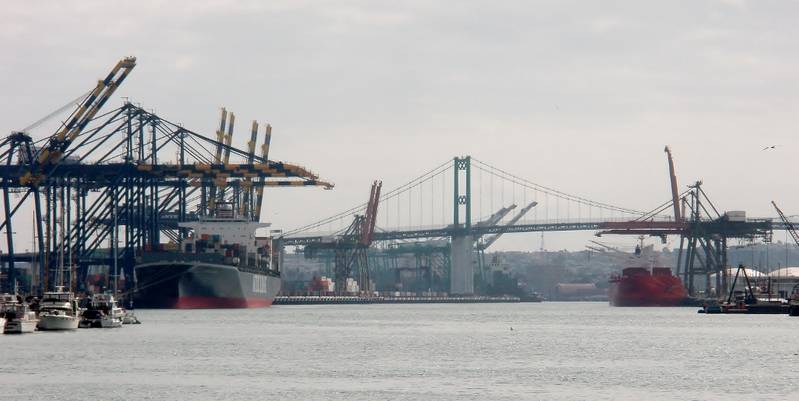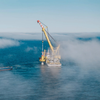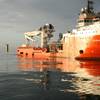Vessel operating costs are expected to rise in both 2016 and 2017, according to the latest survey by international accountant and shipping consultant Moore Stephens. Repairs and maintenance and spares are the cost categories which are likely to increase most significantly in each of the two years.
The survey is based on responses from key players in the international shipping industry, predominantly shipowners and managers in Europe and Asia. Those responses revealed that vessel operating costs are expected to rise by 1.9 percent in 2016 and by 2.5 percent in 2017.
The cost of repairs and maintenance is expected to increase by 1.7 percent in 2016 and by 1.9 percent in 2017, while expenditure on spares is predicted to rise by 1.7 percent in 2016 and by 1.8 percent in 2017. The cost of drydocking expenditure, meanwhile, is predicted to increase by 1.5 percent and 1.8 percent in 2016 and 2017 respectively.
The survey revealed that the outlay on crew wages is expected to increase by 1.3 percent in 2016, rising to 1.8 percent in 2017, with other crew costs thought likely to go up by 1.2 percent and 1.4 percent respectively for the years under review.
The increase in outlay for lubricants is predicted to be 0.8 percent and 1.4 percent in 2016 and 2017 respectively, and that for stores 1.3 percent and 1.7 percent. Meanwhile, projected increases in management fees are 1 percent and 1.2 percent in the two years under review.
The cost of hull and machinery insurance is predicted to rise by 0.9 percent and 1.1 percent in 2016 and 2017 respectively, while for P&I insurance the projected increases are 1.1 percent and 1.2 percent.
The predicted overall cost increases for 2016 were highest in the container ship sector, where they averaged 3.3 percent against the overall survey increase of 1.9 percent. By way of contrast, predicted cost increases for 2016 in the offshore sector were just 0.2 percent. Containerships also headed the expected cost increases for 2017, at 3.4 percent compared to the overall survey average of 2.5 percent. Tankers featured in second place for both years at 2.5 percent for 2016 and 2.9 percent for 2017.
The mood of respondents generally was quite pragmatic, with many referencing the need to address such familiar problem areas as over-tonnaging, excessive competition, a paucity of finance, rising fuel costs and burgeoning regulation and legislation. “An even greater discrepancy is expected between operating costs and freight rates,” said one respondent. “Owners will manage to make ends meet, but barely.”
Despite the expectation of increased crew costs, one respondent predicted, “Crew wages will drop as owners look for cheaper nationalities or mixed crewing,” while another said, “Reduced global trade demand will offset pressure for higher crew salaries.” Elsewhere it was noted, “Crew costs are very much dependent on the employment of ships. The whole management process will undergo substantial restructuring, with flags and other stakeholders needing to be more pragmatic regarding MLC compliance and vessel operation.” Another respondent, meanwhile, said that sourcing good quality crew could be a problem as “many have changed profession.”
The cost of meeting regulatory requirements was high on the list of concerns cited by respondents, one of whom noted, “Operating costs will rise for technical expenses such as maintenance and repair held over from previous years, while the cost of ballast water treatment plant will have to be taken into consideration in 2017 drydocking budgets.” Another respondent pointed out, “With the Ballast Water Management (BWM) convention coming into force in 2017, drydocking costs will increase significantly, depending on the type and size of ship involved.” And yet another warned, “As the quality and reliability of machinery and equipment in general deteriorates, then so the cost of maintenance increases.” Elsewhere it was noted, “The new international standards for limiting NOx, SOx and PM emissions from vessels will substantially increase operating costs.”
More than one respondent emphasized the need to keep down labor and management costs without sacrificing quality. One said, “Operating budgets have been pushed further and further south, with numerous managers willing to ‘low-ball’ operating budgets to catch the eye of new and existing owners. This can cause severe risk to the operating condition of vessels, but it appears that owners are willing – or have no choice but – to accept operating budgets which include unattainable assumptions and to fund additional cash call requirements where they become necessary.”
Respondents were also asked to identify the three factors that would most affect operating costs over the next 12 months. Overall, 20 percent of respondents (compared to 22 percent in last year’s survey) identified finance costs as the most significant factor, followed by competition at 19 percent (down from 22 percent last time). Crew supply was in third place with 18 percent (up one percentage point on last time), followed by demand trends (up by one percentage point to 17 percent) and labor costs, unchanged at 13 percent. The cost of raw materials was cited by 11 percent of respondents (compared to 8 percent in last year’s survey) as a factor that would account for an increase in operating costs.
Richard Greiner, Moore Stephens Partner, Shipping & Transport, said, “The predicted increases in ship operating costs for 2016 and 2017 compare to an average fall in operating costs in 2015 of 2.4 percent across all main ship types recorded in the recent Moore Stephens OpCost study. And whilst the level of predicted increases for this year and next will undoubtedly be of concern to owners and operators, seasoned market operators and observers alike will not need particularly long memories to call to mind increases of more than eight times the levels predicated for 2016. In 2008, for example, the average operating cost increase absorbed by the industry was no less than 16 percent. Meanwhile, one year ago, expectations of operating cost increases in 2016 were 2.8 percent on average, so the fall in that expectation to 1.9 percent is of note.
“It is some time since crew wages failed to register the highest level of predicted cost increases in our survey, but such was the case with the forecasts for 2016, where repairs and maintenance costs headed the list, together with spares. This may be due to a number of factors, including the need to commit to repairs and maintenance deferred in earlier years, and the opportunity to do so at a time when the alternative may be to struggle to compete in a difficult economic and industry climate.
“Repairs and maintenance also topped the predicted operating cost increases for 2017, at 1.9 percent, ahead of crew wages, drydocking and spares, all at 1.8 percent. This is not a surprise given predicted increases in global steel prices and the fact that regulation and legislation, mandated and enforced mainly by IMO and Port State Control respectively, are now so tight in terms of both safety and environmental preparedness and responsibility. Above all, shipping needs safe ships and safety-minded crews to stay afloat, and both come with a heavy price-tag.
“One highly influential factor behind the anticipated rise in drydocking costs, most notably in 2017, is the entry into force of the Ballast Water Management Convention in September 2017, before which date some owners may choose to put their ships into drydock to ready them for the new legislation.
“The anticipated rise in crew wages and other crew costs, meanwhile, is arguably lower than anticipated, and there was indeed a feeling on the part of some respondents that, despite the entry into force of the Maritime Labor Convention 2006, wages could stabilize this year or even go down, due largely to the combination of a reduction in global trade and wider recourse to cheaper, less experienced manning alternatives.
“Shipping faces a number of potentially costly compliance responsibilities, including the imposition of an 0.5 percent global cap on sulphur emissions with effect from 2020. Other operating issues include predicted increases in the price of fuel, albeit from comparatively low levels, as OPEC looks to reduce oil production levels. This will have a knock-on effect on lube oil costs.
“Shipping is an industry suffering from an imbalance in supply and demand, illustrated by the chronic overcapacity in many trades, never mind that BIMCO recently reported that the shipbuilding sector faces its lowest level of newbuildings for 20 years. But it is an industry with a guaranteed future, witness the recent decision of lMO to select ‘Shipping: Indispensable to the World’ as its theme for World Maritime Day 2016. Just how healthy that future will be depends on the ability to generate sustainable profits after operating costs have been met.”















